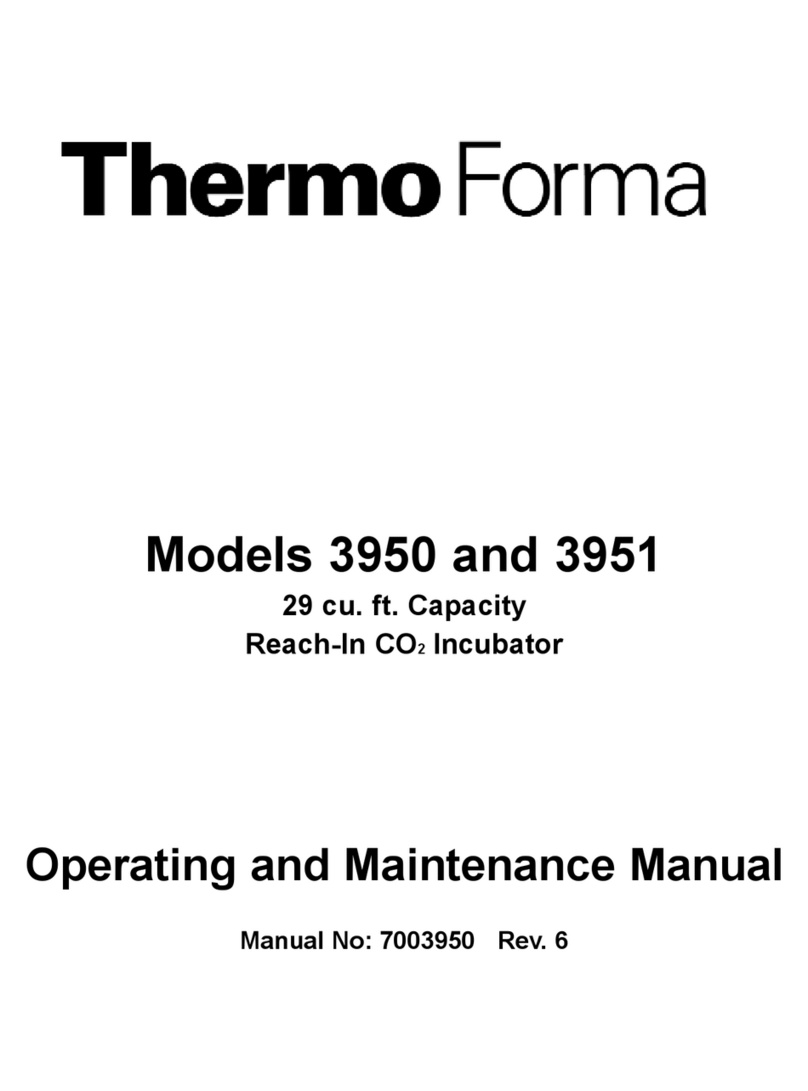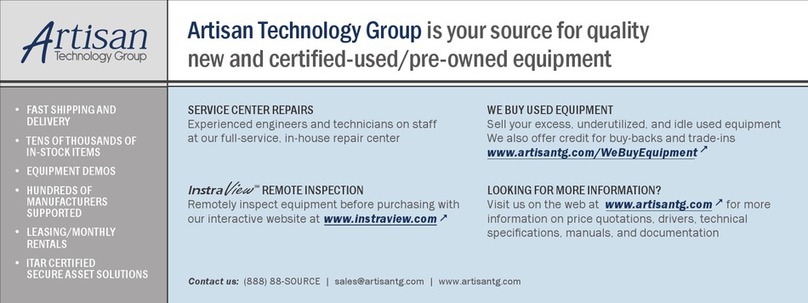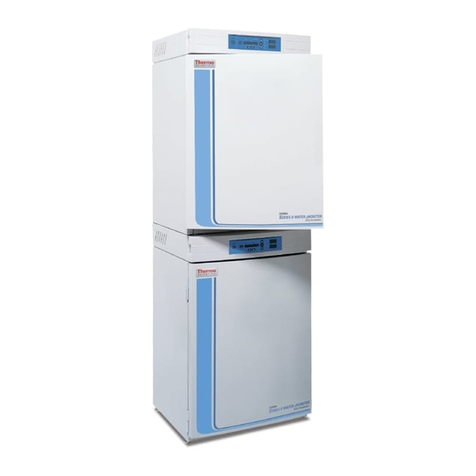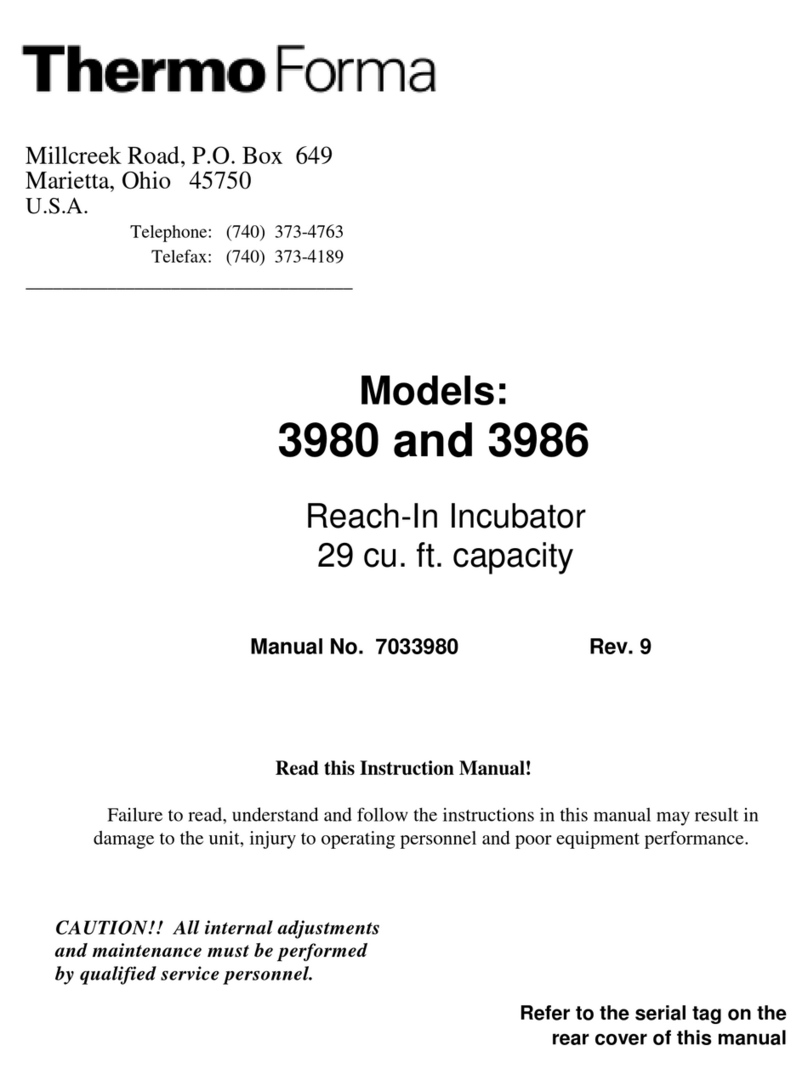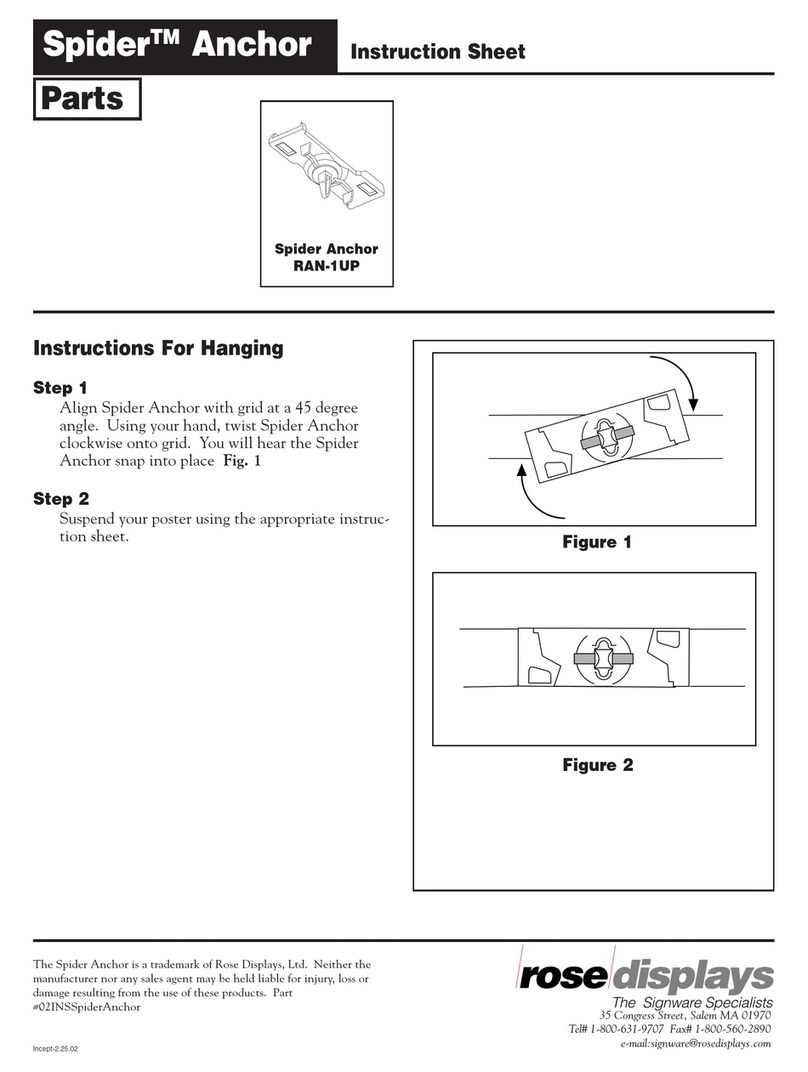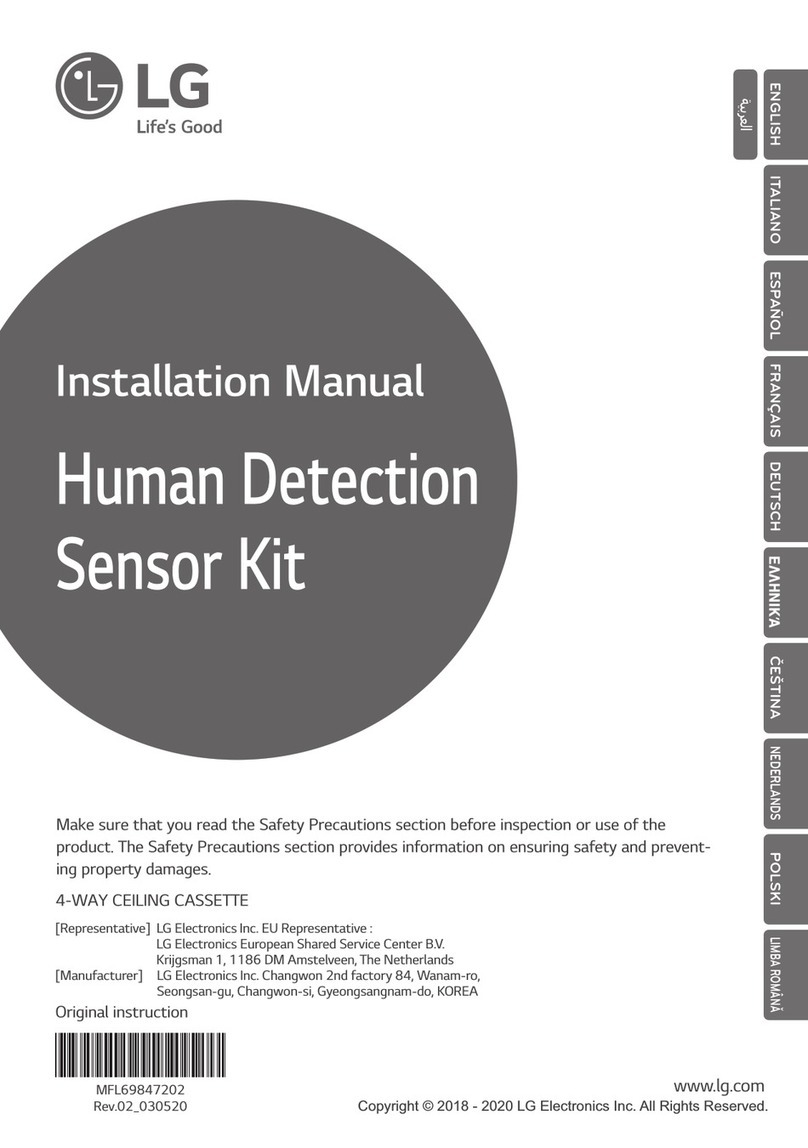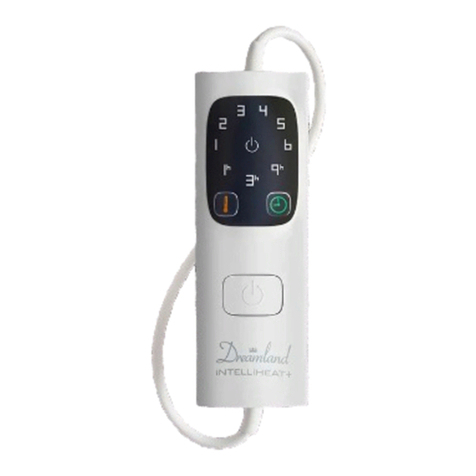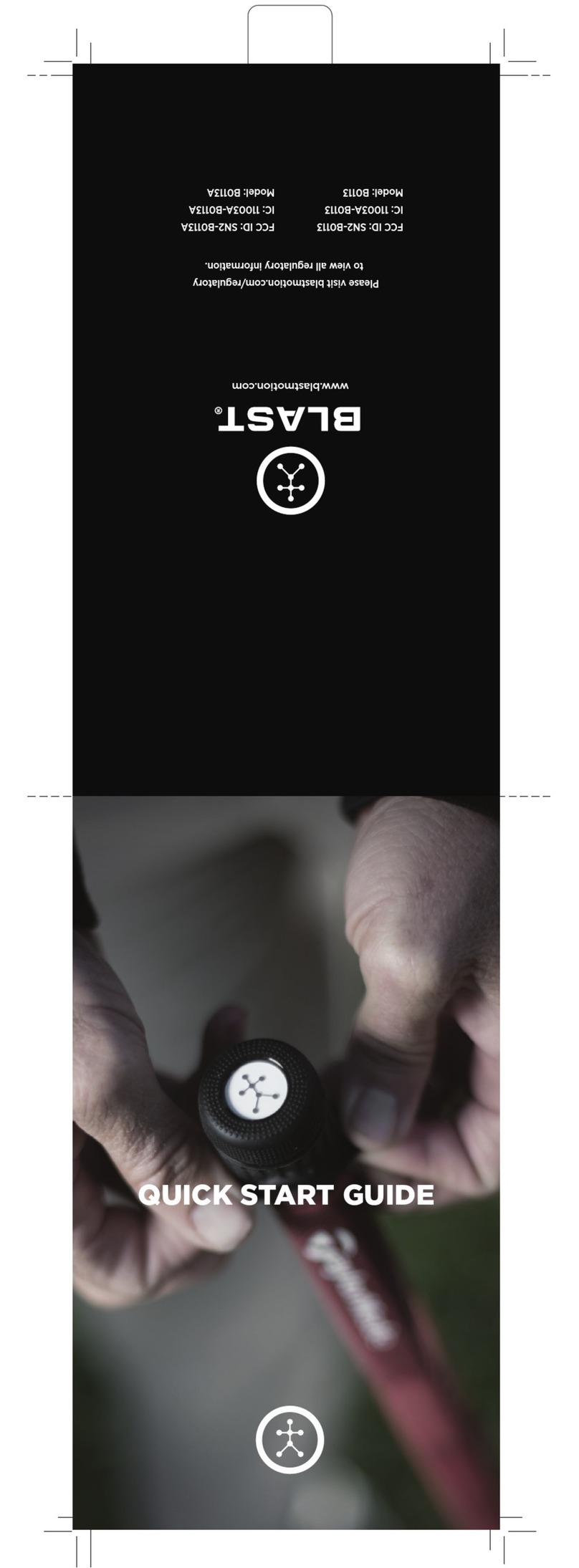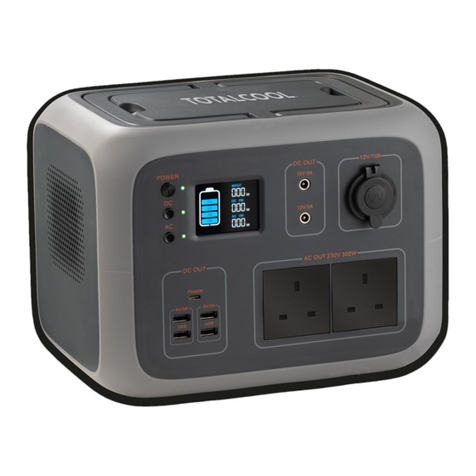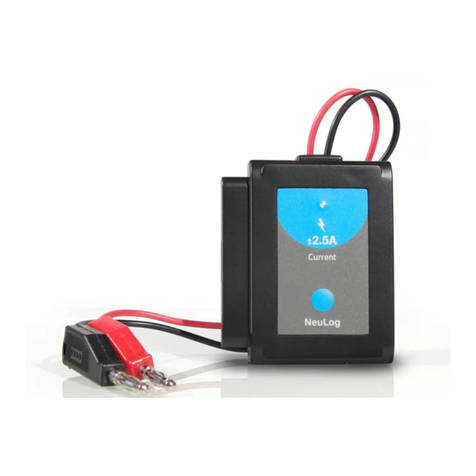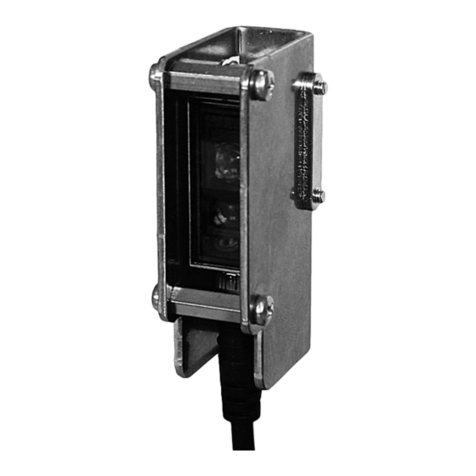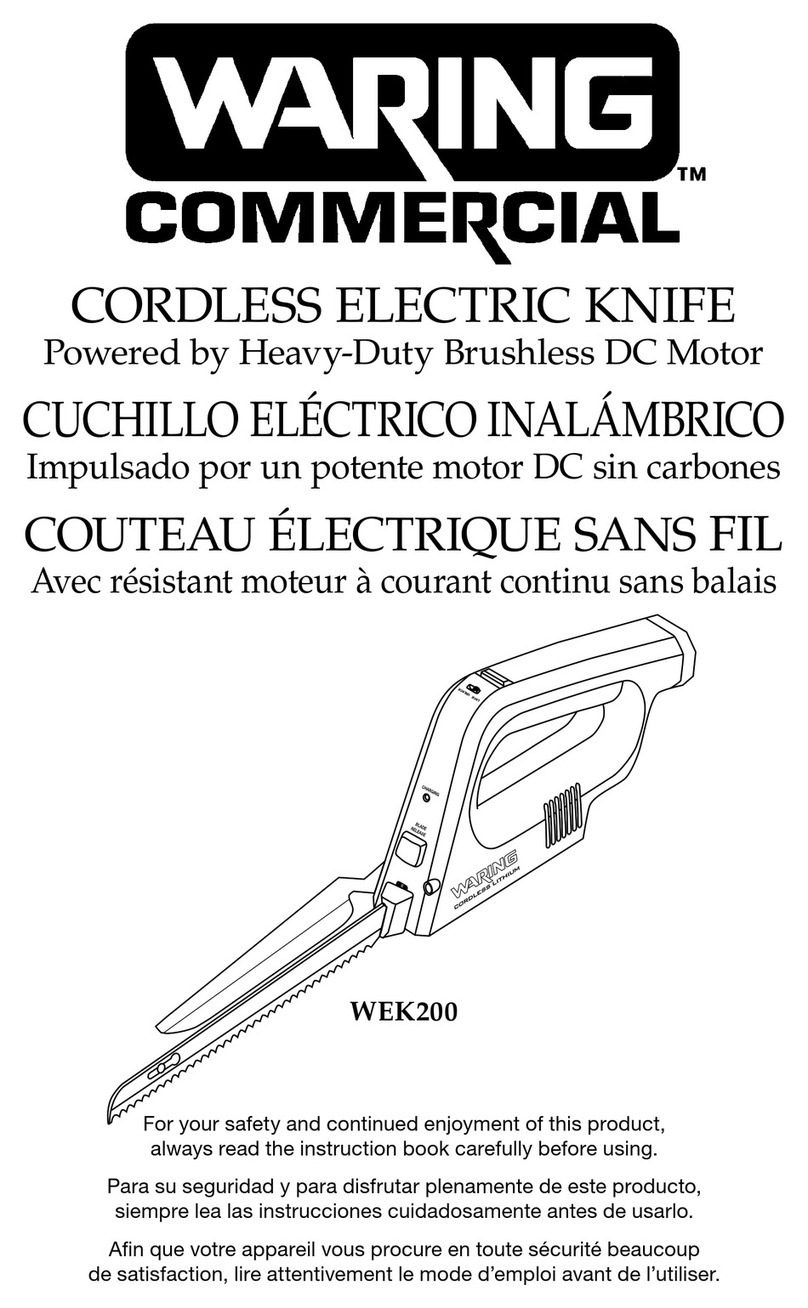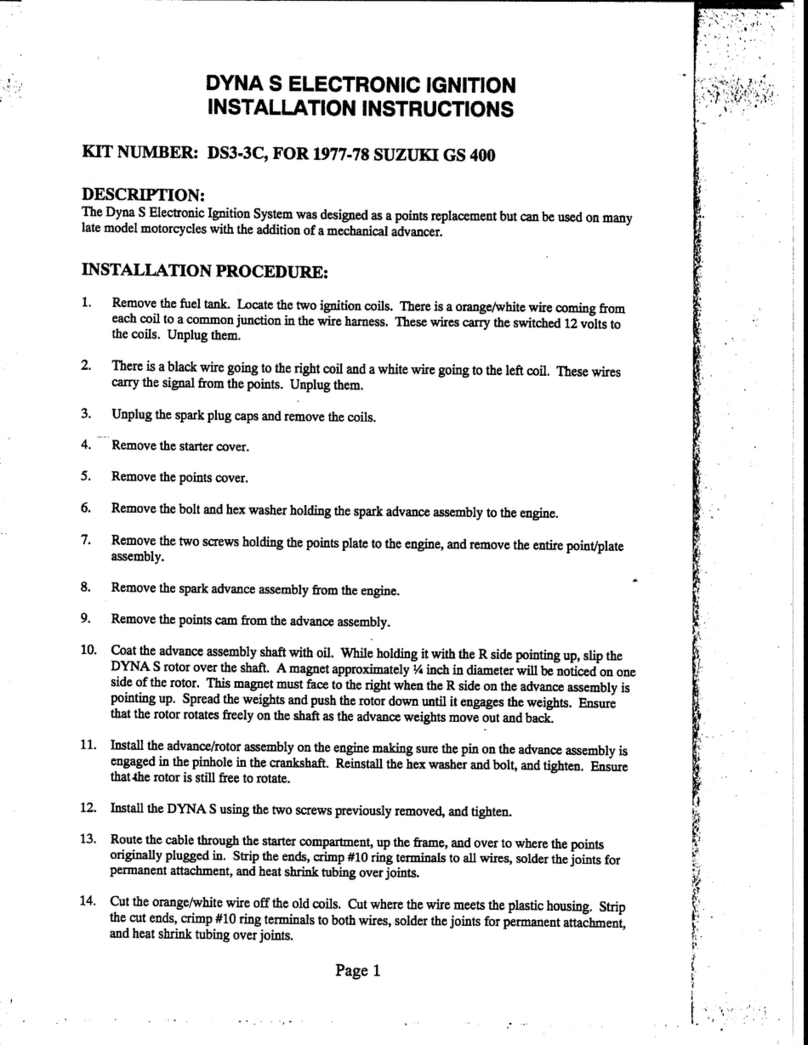Thermo Forma 370 Series Operating instructions

Models:
370/371 and 380/381
Steri-Cycle Incubator
Direct Heat with Sterilization Cycle
Operating and Maintenance Manual
Manual No: 7000370 Rev. 2

Model 370 and 380 Series _______________________________________________________________________________
i
If the incubator is not used in the manner speci-
fied in this operating manual, the protection pro-
vided by the equipment design may be impaired.
Read This Instruction Manual.
Failure to read, understand and follow the instructions in
this manual may result in damage to the unit, injury to operat-
ing personnel, and poor equipment performance.
CAUTION! All internal adjustments and maintenance must
be performed by qualified service personnel.
Refer to the serial tag on the back of this manual.
The material in this manual is for information purposes only.
The contents and the product it describes are subject to change
without notice. Thermo Forma makes no representations or war-
ranties with respect to this manual. In no event shall Thermo
Forma be held liable for any damages, direct or incidental, aris-
ing out of or related to the use of this manual.
Model Sensor* Voltage**
370 T/C 115
371 T/C 230
380 IR 115
381 IR 230
*T/C is a thermal conductivity sensor. IR is an infrared sensor.
**All units are 50/60 Hz.
MANUAL NUMBER 7000370
2 20276/IN-2970 9/24/01 Clarified Step 2 of Section 4.4 ccs
1 19948/IN-2947 9/10/01 Updated CO2inlet labels, 200-9 exploded parts drawing ccs
-- -- 6/28/01 Updates per J. Leach
(art & list on page 5-4 and reference to 4-3, not 4-4 in Alarm section) ccs
0 -- 3/1/01 Original manual ccs
REV ECR/ECN DATE DESCRIPTION By
Contains Parts and Assemblies
Susceptible to Damage by
Electrostatic Discharge (ESD)
CAUTION

Model 370 and 380 Series _________________________________________________________________________Warnings
ii
Important operating and/or maintenance instructions. Read the accompanying text carefully.
Potential electrical hazards. Only qualified persons should perform procedures associated with this symbol.
Hot surface(s) present which may cause burns to unprotected skin or to materials which may be damaged by elevated
temperatures
√ Always use the proper protective equipment (clothing, gloves, goggles, etc.)
√ Always dissipate extreme cold or heat and wear protective clothing.
√ Always follow good hygiene practices.
√ Each individual is responsible for his or her own safety.

Model 370 and 380 Series ___________________________________________________________________________Service
iii

Model 370 and 380 Series __________________________________________________________________Table of Contents
iv
Table of Contents
Section 1 - Installation and Start-up . . . . . . . . . . . . . .1 - 1
1.1 Incubator Components . . . . . . . . . . . . . . . . . . . . . . .1 - 1
1.2 Control Panel Keys, Displays and Indicators . . . . . .1 - 1
1.3 Operation of the Keypad . . . . . . . . . . . . . . . . . . . . .1 - 2
1.4 Displays . . . . . . . . . . . . . . . . . . . . . . . . . . . . . . . . .1 - 2
1.5 Installing the Incubator . . . . . . . . . . . . . . . . . . . . . .1 - 2
a. Choosing the Location . . . . . . . . . . . . . . . . . . . .1 - 2
b. Stacking the Incubators . . . . . . . . . . . . . . . . . . .1 - 3
c. Preliminary Cleaning and Disinfecting . . . . . . . .1 - 4
d. Installing the Shelves . . . . . . . . . . . . . . . . . . . . .1 - 4
e. Installing the Access Port Filter and CO2Sensor Cover
Plate . . . . . . . . . . . . . . . . . . . . . . . . . . . . . . . . . .1 - 4
f. Installing the HEPA Filter . . . . . . . . . . . . . . . . . .1 - 4
g. Installing the Air Sample Filter . . . . . . . . . . . . . .1 - 5
h. Leveling the Unit . . . . . . . . . . . . . . . . . . . . . . . .1 - 5
i. Connecting the Unit to Electrical Power . . . . . . .1 - 5
j. Filling the Humidity Pan . . . . . . . . . . . . . . . . . . .1 - 5
k. Connecting the CO2Gas Supply . . . . . . . . . . . . .1 - 6
1.6 Incubator Start-Up . . . . . . . . . . . . . . . . . . . . . . . . . .1 - 6
a. Setting the Operating Temperature . . . . . . . . . . .1 - 6
b. Setting the Overtemp Setpoint . . . . . . . . . . . . . .1 - 6
c. Setting the CO2Setpoint . . . . . . . . . . . . . . . . . . .1 - 7
Section 2 - Calibration . . . . . . . . . . . . . . . . . . . . . . . . .2 - 1
2.1 Calibration Mode . . . . . . . . . . . . . . . . . . . . . . . . . . .2 - 1
a. Calibrating the Temperature . . . . . . . . . . . . . . . .2 - 1
b. Calibrating Thermal Conductivity CO2System . .2 - 1
c. Calibrating the Infrared CO2System . . . . . . . . . .2 - 1
d. Calibrating Relative Humidity . . . . . . . . . . . . . .2 - 2
Section 3 - Configuration . . . . . . . . . . . . . . . . . . . . . . .3 - 1
3.1 Configuration Mode . . . . . . . . . . . . . . . . . . . . . . . .3 - 1
a. Turning the Audible Alarm ON/OFF . . . . . . . . .3 - 1
b. New HEPA Filter . . . . . . . . . . . . . . . . . . . . . . . .3 - 1
c. Setting the REPLACE HEPA filter reminder . . .3 - 1
d. Setting an Access Code . . . . . . . . . . . . . . . . . . .3 - 1
e. Setting a Low Temp Alarm Limit . . . . . . . . . . . .3 - 1
f. Enabling Low Temp Alarm to Trip Contacts . . . .3 - 2
g. Setting a Low CO2Alarm Limit . . . . . . . . . . . . .3 - 2
h. Setting a High CO2Alarm Limit . . . . . . . . . . . . .3 - 2
i. Enabling CO2Alarms to Trip Contacts . . . . . . . .3 - 2
j. Setting New Zero Number for T/C CO2Sensors . .3 - 2
k. Setting New Span Number for T/C CO2Sensors .3 - 2
l. Setting a Low RH Alarm Limit . . . . . . . . . . . . . .3 - 3
m. Enabling RH Alarms to Trip Contacts . . . . . . . .3 - 3
n. Enabling Temp/RH to be Displayed . . . . . . . . . .3 - 3
o. Selecting a Primary Tank w/ Gas Guard Option .3 - 3
p. Enabling the Gas Guard System . . . . . . . . . . . . .3 - 3
q. Setting a RS485 Communications Address . . . . .3 - 3
Section 4 - Alarms . . . . . . . . . . . . . . . . . . . . . . . . . . . .4 - 1
4.1 Alarms . . . . . . . . . . . . . . . . . . . . . . . . . . . . . . . . . .4 - 1
4.2 Temperature Controller Failure . . . . . . . . . . . . . . . . .4 - 1
4.3 Sensor Fault Alarms . . . . . . . . . . . . . . . . . . . . . . . .4 - 1
Section 5 - Routine Maintenance . . . . . . . . . . . . . . . . .5 - 1
5.1 Disinfecting the Incubator Interior . . . . . . . . . . . . . .5 - 1
5.2 Cleaning the Cabinet Exterior . . . . . . . . . . . . . . . . . .5 - 1
5.3 Cleaning the Glass Doors . . . . . . . . . . . . . . . . . . . .5 - 1
5.4 Cleaning the Humidity Pan . . . . . . . . . . . . . . . . . . .5 - 2
5.5 Reversing the Door Swing . . . . . . . . . . . . . . . . . . . .5 - 2
5.6 HEPA Filter Maintenance . . . . . . . . . . . . . . . . . . . . .5 - 3
5.7 Replacing the Power Fuses . . . . . . . . . . . . . . . . . . .5 - 3
5.8 Replacing Air Sample Filter . . . . . . . . . . . . . . . . . .5 - 3
5.9 The Electronics Section . . . . . . . . . . . . . . . . . . . . .5 - 3
a. Major Components . . . . . . . . . . . . . . . . . . . . . . . .5 - 4
5.10 Sterilization Cycle . . . . . . . . . . . . . . . . . . . . . . . . .5 - 5
Section 6 - Factory Options . . . . . . . . . . . . . . . . . . . . .6 - 1
6.1 Connections to External Equipment . . . . . . . . . . . . .6 - 1
a. Connecting the Remote Alarm Contacts . . . . . . .6 - 1
b. Connecting the RS485 Interface . . . . . . . . . . . . .6 - 1
c. Connecting the Analog Output Boards . . . . . . . .6 - 1
6.2 CO2Gas Guard . . . . . . . . . . . . . . . . . . . . . . . . . . . . .6 - 2
a. Connecting the CO2Gas Supplies . . . . . . . . . . . .6 - 2
b. Activating the Gas Guard . . . . . . . . . . . . . . . . . .6 - 2
c. Operation of the CO2Gas Guard . . . . . . . . . . . . .6 - 3
6.3 Humidity Readout . . . . . . . . . . . . . . . . . . . . . . . . . .6 - 3
a. Factors Affecting Humidity Level in Chamber . .6 - 3
b. Accuracy of the Humidity Readout . . . . . . . . . . .6 - 3
Section 7 - Specifications . . . . . . . . . . . . . . . . . . . . . . . .7 -1
Section 8 - Spare Parts . . . . . . . . . . . . . . . . . . . . . . . . .8 - 1
Section 9 - Electrical Schematics . . . . . . . . . . . . . . . . .9 - 1
Section 10 - Warranty Information . . . . . . . . . . . . .10 - 1

Section 1 - Installation and Start-up
1.1 Incubator Components
Figure 1-1
Model 370 Series Incubator
• Outer Door - Reversible to opposite swing, see Section 5.5
• Inner Door - Reversible to opposite swing, see Section 5.5
• Chamber Gas Sample Port - Used for sampling chamber
CO2content using a FYRITE or similar instrument.
• Main Power Switch
• Control Panel - Keypad, Displays & indicators (Figure 1-2)
• Leveling Legs - Used to level the unit
• Power Switch - Mains disconnect
• Sterilization Cycle Button - Switch to initiate sterilization
cycle
Note: The incubators are stackable. See Section 1.5.b.
1.2 Control Panel Keys, Displays and Indicators
(See Figure 1-2)
1. Silence - Silences the audible alarm.
2. Alarm Indicator - Light pulses on/off during an alarm
condition in the cabinet.
3. Mode Select Switch - Used to select Run, Setpoints,
Calibration and System Configuration Modes.
4. Message Center - Displays system status.
5. Mode Select Indicators -
Run: Run Menu
Set: Set Points Menu
Cal: Calibrate Menu
Config: Configuration Menu
6. Up and Down Arrows - Increases or decreases the num-
ber values, toggles between choices.
7. Enter - Stores the value into computer memory.
8. Heat Indicator - Lights when power is applied to the
heaters.
9. Temp Display - Program to display temperature continu-
ously, RH continuously (with RH option), or toggle
between temperature and humidity (with RH option).
See Section 3.1, Configuration.
10. Scroll for Parameters Arrows - Moves the operator
through the choices of the selected mode.
11. CO2Inject Indicator - Lights when CO2is being injected
into the incubator.
12. % CO2 Display - Displays CO2percentage continuously.
Model 370 and 380 Series ____________________________________________________________Installation and Start-Up
1 - 1
Silence Mode SYSTEM OK
36.9
4.9
Enter
Run Set Cal Config Heat Temp
Inject % CO 2
Scroll for Parameters
2
3
4
56
7
8 9
11
10 12
Figure 1-2, Control Panel

1.3 Operation of the Keypad
The Model 370 Series incubator has four
basic modes which allow incubator setup: Run,
Setpoints, Calibration and System Configuration.
Run is the default mode which the incubator will normally
be in during operation.
Set is used to enter system setpoints for incubator opera-
tion.
Calibration is used to calibrate various system parameters.
Configuration allows for custom setup of various options.
The chart below shows the selections under each of the
modes.
1T/C units only Base Unit Displays
2IR units only Option Displays
*T/C units only
Scroll for Parameters Arrows: Steps the
operator through the parameters of SET, CAL
and CONFIG Modes. The right arrow goes to
the next parameter, the left arrow returns to the
previous parameter.
Up Arrow: Increases or toggles the parameter value
that has been selected in the SET, CAL, and CONFIG
Modes.
Enter: Must press Enter key to save to memory all
changed values.
Down Arrow: Decreases or toggles the parameter
values that have been selected in the SET, CAL and
CONFIG Modes.
Silence Key: Press to silence the audible alarm. See
Section 4 for alarm ringback times.
1.4 Displays
Message Center: Displays the system sta-
tus (Mode) at all times. Displays CLASS
100 or SYSTEM OK during normal opera-
tion, or alarm messages if the system detects
an alarm condition. See Section 4.1, Alarms. The dis-
play message CLASS 100 is a timing mechanism indi-
cating that, under normal operating conditions with the
HEPA filter installed, the air inside the chamber meets
the Class 100 air cleanliness standard for particulates of
0.5 micron size or larger per cubic foot of air. (For fur-
ther information on the Class 100 classification of air
quality, see Appendix A.)
Upper and Lower Displays: These 7 seg-
ment displays vary depending upon the
options present and the configuration chosen.
The upper display can display temp or RH, or
toggle between them. The bottom display
shows CO2continuously.
1.5 Installing the Incubator
a. Choosing the Location
Single and stacked units must be installed against
a wall or similar structure.
1. Maintain a three-inch clearance behind the incubator for
electrical and gas hook-ups. In addition, a three-inch
ventilation space is needed on each side of the unit.
2. Locate the unit on a firm level surface capable of sup-
porting the unit’s weight of 260 lbs.
3. Locate the unit away from doors and windows and heat-
ing and air conditioning ducts.
4. Lift the unit only by the sides of the cabinet base. Do
not attempt to lift it by the front and back. This places
stress on the outer door hinges.
Model 370 and 380 Series ____________________________________________________________Installation and Start-Up
1 - 2
RUN
SETPOINT
CALIBRATION
CONFIGURATION
Default Mode
Temperature
Temp Offset
Audible
Overtemp
CO2Cal1
New HEPA Timer
CO2
IR Cal2
Replace HEPA Reminder
RH Cal
Access Code
Temp Lo Alarm
Temp Relay
CO2Lo Alarm
CO2Hi Alarm
CO2Relay
CO2Z & S #’s *
RH Lo Alarm
RH Relay
Display Temp
Display RH
Tank Select
Gas Guard
RS485 Address
SYSTEM OK
Run
Set
Cal
Config
36.9
4.9
Temp
% CO
2

b. Stacking the Incubators
With incubators in a stacked configuration, do not
leave both exterior doors open at the same time.
If the units have been in operation,
turn them both off and disconnect the
power before beginning any service
work.
Two stacking brackets (shown at left)
are included in the parts bag shipped
with each incubator.
Figure 1-3
1. Remove the cover
plate securing the
door cord from the
incubator to be on
top. See Figure 1-4.
Disconnect the plug
from the connector.
2. Remove the four screws securing the door hinges to the
unit. Remove the door and set it aside.
3. Unscrew the two hole plugs from the top cover of the
incubator to be the bottom of the stack (Figure 1-5).
4. Unscrew and remove the 4 leveling feet
from the unit to be stacked on top and
lift it onto the bottom unit. Align all
sides.
This incubator weighs 260 lbs. Have sufficient
personnel available when lifting. Lift the unit by
the sides of the cabinet base to avoid placing
stress on the outer door hinge.
5. Insert the stacking brackets
into the slots at the back of the
stacked units as shown in
Figure 1-7.
6. Align the slotted holes in the
brackets with the mounting
holes on the back of the
top incubator. Secure the
brackets with the screws
and washers provided in the parts bag. See Figure 1-8.
7. Thread one 1/4 x 20
bolt and washer includ-
ed with the stacking
brackets, into the hole
behind the cover plate.
Do not tighten. Refer to
Figure 1-9.
8. Remove the cover plate
from the same area on
the other side of the top
unit.
9. Thread the other 1/4 x
20 bolt and washer into
this hole.
10. Tighten the bolts on
both sides.
11. Assemble the door hinges to the unit. Secure with the
screws.
12. Plug the door cord into the connector, as previously.
Secure the cover plate.
13. Install the cover plate on the other side of the unit.
14. The stacked incubators are ready for service.
Model 370 and 380 Series ____________________________________________________________Installation and Start-Up
1 - 3
Figure 1-4
Figure 1-5
Figure 1-9
Figure 1-7
Figure 1-8
Figure 1-6

c. Preliminary Cleaning and Disinfecting
1. Using a suitable laboratory disinfectant, disinfect all
interior surfaces.
d. Installing the Shelves
1. Install the large sheet metal side ducts with the tabs fac-
ing into the center of the chamber with their slots up.
There are no right side or left side ducts, simply turn one
of them to fit the opposite side. Tilt the side ducts as
they are placed into the chamber so the tops fit into the
top air duct, then guide them into the vertical position.
Figure 1-10 shows the side duct as it would be oriented
for the right side of the chamber.
2. Note that there is no difference in the left and right side
shelf channels.
3. Install the shelf channels by placing the channel’s rear
slot over the appropriate rear tab on the side duct. Pull
the shelf channel forward and engage the channel’s front
slot into the side duct’s appropriate forward tab. Refer to
Figure 1-11.
4. Figure 1-12 shows one of the
channels installed on the right
side duct.
e. Installing the Access Port Filter and CO2
Sensor Cover Plate
1. Locate the opening in the top left corner on the inside of
the chamber. Remove the tape covering the opening on
the outside of the unit.
2. Locate the stopper with filter in the hardware bag. Lift
the metal port cover and install the assembly in the
opening inside the chamber. See Figure 1-13.
3. Also in the hardware bag is the CO2sensor cover plate.
Install, using the 1/4 turn fasteners. Refer to Figure 1-13
for the location.
Figure 1-13
f. Installing the HEPA Filter
Use caution when handling the filter. The media
can be damaged if it is mishandled.
To avoid damage to the incubator, do not operate
the unit without the HEPA filter in place.
1. Remove the filter from the shipping box.
2. Remove the plastic coating from the filter, using caution
not to touch the filter media.
3. Install the filter as shown in Figure 1-13. Refer to
Section 5.6 for HEPA filter maintenance.
Model 370 and 380 Series ____________________________________________________________Installation and Start-Up
1 - 4
Side Duct
Shelf Channels
Side toward shelf
Side duct
tab
shelf channel
rear slot
shelf channel
front slot
Side duct
tab
Figure 1-11
Figure 1-10
Figure 1-12

g. Installing the Air Sample Filter
1. Remove the filter from the shipping bag.
2. Install the air sample filter assembly to the black hose
barb behind the top duct.
3. Insert the other end of the filter assembly onto the metal
tubing on the top duct. Refer to Figure 1-13.
h. Leveling the Unit
Check for level by placing a bubble-style level on one of
the shelves. Turn the hex nut on the leveler counterclockwise to
lengthen the leg or clockwise to shorten it. Level the unit front-
to-back and left-to-right.
i. Connecting the Unit to Electrical Power
See the serial tag on the side of the unit for electrical speci-
fications or refer to the electrical schematics at the end of this
manual.
The serial tag amp rating is based on the amper-
age draw during the sterilization cycle. Normal
operating amperage is much less. Ensure that the
electrical circuit will handle the amp draw of the
sterilization cycle.
Connect the incubator to a grounded, dedicated
circuit.
The power cord connector is the mains disconnect
device for the incubator. Position the incubator so
the unit can be easily disconnected.
Plug the provided power cord into the power inlet connec-
tor on the back of the cabinet (See Figure 1-14), then into the
grounded, dedicated, electrical circuit.
j. Filling the Humidity Pan
Fill the humidity pan with sterile distilled water to within
1/2” of the top. Place the pan directly in the center of the incu-
bator floor.
For applications requiring high humidity, the pan should be
placed against the left side wall of the incubator. The side ducts
have been modified to allow the pan to be placed against the
wall. Optimum humidity is achieved by capping the CO2sam-
ple port. This will, however, cause condensation in the cham-
ber. To enhance RH recovery from door openings, place a sec-
ond humidity pan in the right side duct.
For best operation of the incubator, sterilized distilled,
demineralized or de-ionized water should be used in the humid-
ity pan. Water purity should be in the resistance range of 50K
Ohm/cm to 1M Ohm/cm, or a conductivity range of 20.0 uS/cm
to 1.0 uS/cm. Refer to ASTM Standard D5391-93 or D4195-88
for measuring water purity.
Distillation systems, as well as some types of reverse
osmosis water purity systems, can produce water in the quality
range specified. Tap water is not recommended as it may con-
tain chlorine, which deteriorates stainless steel. Tap water may
also have a high mineral content, which would produce a build-
up of scale in the reservoir. High purity, ultra pure or milli-q
water is not recommended as it is an extremely aggressive sol-
vent and will deteriorate stainless steel. High purity water has a
resistance of above 1M Ohm to 18M Ohm. Even high purity
water can contain bacteria and organic contaminants. Water
should always be sterilized or treated with a decontaminant,
safe for use with stainless steel as well as safe for the product,
prior to being introduced into the humidity pan.
Check the level and change the water frequently to avoid
contamination. Do not allow the water level to fluctuate signifi-
cantly. “Dry-outs” will have an adverse effect on the humidity
level and CO2calibration of the T/C units.
Distilled or de-ionized water used in the humidity
pan must be within a water quality resistance
range of 50K Ohm/cm to 1M Ohm/cm to protect
and prolong the life of the stainless steel. Use of
water outside the specified range will decrease the
operating life of the unit and may void the
warranty.
Model 370 and 380 Series ____________________________________________________________Installation and Start-Up
1 - 5
ACCESS ORY
75 WATTSMAX.
RS 485
ALAR M CONTACTS
30V M AX / 1A MAX
#2
CO inject
15 p.s.i. Regula ted
(103.4 kPa)
2
#1
CO inject
15 p.s.i. Regula ted
(103. 4 kPa)
2
a
b
RJ-ll telephone style connectors
Used with the optional Gas Guard System
bOptional
RS 485 bCO2 Inlet
#1 Tank
aCO2 Inlet
#2 Tank
aRemote
Alarm Contacts
30V max/1A max
Power Cord
Connector
Figure 1-14

k. Connecting the CO2Gas Supply
High concentrations of CO2gas can cause asphyx-
iation! OSHA Standards specify that employee
exposure to carbon dioxide in any eight-hour shift
of a 40-hour work week shall not exceed the eight-
hour time weighted average of 5000 PPM (0.5%
CO2). The short term exposure limit for 15 min-
utes or less is 30,000 ppm (3% CO2). Carbon diox-
ide monitors are recommended for confined areas
where concentrations of carbon dioxide gas can
accumulate.
This incubator is designed to be operated with
CO2gas only. Connecting a flammable or toxic
gas can result in a hazardous condition.
Gases other than CO2should not be connected to
this equipment. CO2gas cylinders have a UN1013
label on the cylinder and are equipped with a
CGA 320 outlet valve. Check the gas cylinder for
the proper identification labels. The CO2gas sup-
ply being connected to the incubator should be
industrial grade, 99.5% pure. Do not use CO2gas
cylinders equipped with siphon tubes. A siphon
tube is used to extract liquid CO2from the cylin-
der which can damage the pressure regulator.
Consult with your gas supplier to ensure that the
CO2cylinder does not contain a siphon tube. Gas
cylinders should also be secured to a wall or other
stationary object to prevent them from tipping.
A two-stage CO2pressure regulator is required to
be installed on the outlet valve of the gas cylinder.
Input pressure to the incubator must be main-
tained at 15 psig (103.4 kPa) for proper perform-
ance of the CO2control system. A single stage CO2
pressure regulator will not maintain 15 psig
(103.4 kPa) to the incubator as the pressure in the
CO2 cylinder decreases; therefore, a two stage
regulator is recommended.
If higher purity CO2is desired inside the incuba-
tor (greater than 99.5% pure), the pressure regu-
lator should be constructed with a stainless steel
diaphragm, along with specifying the purity of the
CO2from the gas supplier. Follow the manufac-
turer’s instructions to ensure proper and safe
installation of the pressure regulator on the gas
cylinder.
Consult your facility safety officer to ensure that
the equipment is installed in accordance with the
codes and regulations that are applicable in your
area.
Model 370 and 380 Series ____________________________________________________________Installation and Start-Up
The CO2gas supply being connected should be industrial
grade 99.5% pure and should not contain siphon tubes. Install a
two-stage pressure regulator at the cylinder outlet. The high
pressure gauge at the tank should have 0-2000 psig range. The
low pressure gauge, at the incubator inlet, should have a 0-30
psig range. Input pressure to the incubator must be maintained
at 15 psig (103.4 kPa).
The incubator has serrated fittings on the back of the cabi-
net to connect the gas supply. Refer to Figure 1-14. The fitting
is labeled CO2Inlet #1 Tank. Make sure that the connections
are secured with clamps. Check all fittings for leaks.
For units having the CO2Gas Guard option, refer to
Section 6.2.
1.6 Incubator Start-Up
With the incubator properly installed and connected to
power, the humidity pan filled, and the unit connected to gas
supplies, system setpoints can be entered. The following set-
points can be entered in Set mode: Temperature,
Overtemperature and CO2. To enter Set mode, press the Mode
key until the Set indicator lights. Press the right and/or left
arrow keys until the proper parameter appears in the message
center. See Chart 1-1 for more detail.
a. Setting the Operating Temperature
All 370/380 Series incubators have an operating tempera-
ture range of 10°C to 50°C, depending on ambient temperature.
The incubator is shipped from the factory with a temperature
setpoint of 10°C. At this setting, all heaters are turned off. To
change the operating temperature setpoint:
1. Press the Mode key until the Set indicator lights.
2. Press the right arrow until “Temp XX.X” is displayed in
the message center.
3. Press the up/down arrow key until the desired tempera-
ture setpoint is displayed.
4. Press Enter to save the setpoint.
5. Press the Mode key until the Run indicator lights for
Run mode or press the right/left arrow keys to go to
next/previous parameter.
b. Setting the Overtemp Setpoint
The independent overtemp system is designed as
a safety to protect the incubator only. It is not
intended to protect or limit the maximum temper-
ature of the cell cultures or customer’s equipment
inside the incubator if an overtemp condition
occurs.
1 - 6

370/380 Series incubators are equipped with a secondary
temperature monitoring system to monitor the air temperature
inside the cabinet. This system is designed as a safety device to
turn off all heaters in the event of a temperature control failure.
Temperature control in the incubator will be ±1° of the
overtemp setpoint.
The overtemperature is set by the factory (default) at 40°C.
However, the overtemp can be set up to 55°C in 0.5° incre-
ments.
If the incubator’s operating temperature setpoint is set
above the overtemp setpoint, the overtemp setpoint will auto-
matically update to 1°C above the temperature setpoint. It is
recommended that the overtemp setpoint be maintained at 1°C
over the operating temperature setpoint.
To set the Overtemp setpoint:
1. Press the Mode key until the Set indicator lights
2. Press the right arrow until Otemp XX.X is displayed in
the message center
3. Press the up or down arrow key until the desired
Overtemp setpoint is displayed
4. Press Enter to save the setting
5. Press the Mode key until the Run indicator lights or
press the right or left arrow to go to the next or previous
parameter.
c. Setting the CO2Setpoint
All T/C CO2cells are calibrated at the factory at 37°C, high
humidity, and 10% CO2. Therefore, if a temperature setpoint of
37° C has been entered, the humidity pan has been filled and
the CO2control is to run between 0-10% with a T/C CO2sen-
sor, the CO2setpoint may be entered immediately. Otherwise, it
is important to allow the unit 12 hours to stabilize at the tem-
perature setpoint before entering the CO2setpoint.
All models of the incubator have a CO2setpoint range of
0.0% to 20.0%. The incubator is shipped from the factory with
a CO2setpoint of 0.0%. At this setting, all CO2control and
alarms are turned off. To change the CO2setpoint:
1. Press the Mode key until the Set indicator lights.
2. Press the right arrow until “CO2 XX.X” is displayed in
the message center.
3. Press the up/down arrows until the desired CO2setpoint
is displayed.
4. Press Enter to save the setpoint.
5. Press the Mode key until the Run indicator lights to go
to Run mode or press the right/left arrow keys to go to
next/previous parameter.
Model 370 and 380 Series ____________________________________________________________Installation and Start-Up
1 - 7

Model 370 and 380 Series ____________________________________________________________Installation and Start-Up
1 - 8

Section 2 - Calibration
2.1 Calibration Mode
After the unit has stabilized, several different systems can
be calibrated. In the calibration mode, the air temperature, CO2
and RH levels can be calibrated to reference instruments. To
access the calibration mode, press the Mode key until the Cal
indicator lights. Press the right and/or left arrow until the
appropriate parameter appears in the message center. See Chart
2-1 at the end of this section for more detail.
Calibration frequency is dependent on use, ambient condi-
tions and accuracy required. A good laboratory practice would
require at least an annual calibration check. On new installa-
tions, all parameters should be checked after the stabilization
period.
Prior to calibration, the user should be aware of the follow-
ing system functions. While the unit is in the calibration mode,
all system control functions are stopped so the unit remains sta-
ble. Readout of the system being calibrated will appear on the
message center. If no keys are pressed for approximately five
minutes while in calibration mode, the system will reset to Run
mode so control functions are reactivated.
Before making any calibration or adjustments to
the unit, it is imperative that all reference instru-
ments be properly calibrated.
a. Calibrating the Temperature
Before calibration, allow the cabinet temperature to stabi-
lize. Place the calibrated instrument in the center of the cham-
ber. The instrument should be in the air flow, not against the
shelf.
Temperature Stabilization Periods
Startup - Allow 12 hours for the temperature in the cabinet to
stabilize before proceeding.
Already Operating - Allow at least 2 hours after the display
reaches setpoint for temperature to stabilize before proceeding.
1. Press the Mode key until Cal indicator lights.
2. Press the right arrow until “TEMPCAL XX.X” appears
in the message center.
3. Press up/down arrow to match display to calibrated
instrument.
4. Press Enter to store calibration.
5. Press the Mode key to return to Run or the right/left
arrow to go to next/previous parameter.
b. Calibrating Thermal Conductivity CO2System
Models 370 and 371 have a thermal conductivity (T/C)
CO2sensor. Thermal conductivity of the incubator atmosphere
is not only effected by the quantity of CO2present but also by
the air temperature and water vapor present in the incubator
atmosphere. In monitoring the effects of CO2, air temperature
and absolute humidity must be held constant so any change in
thermal conductivity is caused by a change in CO2concentra-
tion.
Changing temperature or changing from elevated humidity
to room ambient humidity levels will necessitate a re-calibra-
tion of the CO2control.
T/C CO2Sensor Stabilization Periods
Some T/C CO2sensors go through an aging period, espe-
cially on new installations. Calibration should be checked on a
weekly basis and adjusted as necessary. When stabilization
occurs, checks may become less frequent.
Start -Up - The CO2sensor has been calibrated at the factory
for 37°C and elevated humidity. Allow the temperature, humid-
ity, and CO2levels in the chamber to stabilize at least 12 hours
before checking the CO2concentration with an independent
instrument.
Presently Operating - Make sure the chamber doors are
closed. Allow at least 2 hours after the temperature and CO2
displays reach their setpoints for chamber atmosphere stabiliza-
tion.
1. Make sure the stabilization periods outlined above are
followed.
2. Sample the chamber atmosphere through the sample port
with an independent instrument. Sample the atmosphere
at least 3 times to ensure accuracy of the instrument.
3. Press the Mode key until the Cal indicator lights.
4. Press the right arrow until “CO2 CAL XX.X” is dis-
played in the message center.
5. Press the up /down arrows to change the display to
match the independent instrument.
6. Press Enter to store the calibration.
7. Press the Mode key to return to Run or the right or left
arrows to go to the next/ previous parameter.
Model 370 and 380 Series _________________________________________________________________________Calibration
2 - 1

c. Calibrating the Infrared CO2System
Models 380 and 381 have an infrared (IR) CO2sensor.
Infrared CO2sensors are not effected by chamber atmosphere
temperature or humidity. However, the light detector in the sen-
sor is effected by wide temperature changes. Therefore, chang-
ing temperature setpoints could necessitate a recalibration of
the CO2. Chamber temperature should be allowed to stabilize
before checking CO2concentrations with an independent instru-
ment, especially on start-up.
IR CO2Sensor Stabilization Times
Start-Up- Allow the temperature and the CO2of the cabinet to
stabilize at least 12 hours before proceeding.
Presently Operating - Allow CO2to stabilize at least 2 hours
at setpoint before proceeding.
1. Measure the CO2concentration in the chamber through
the gas sample port with a Fyrite or other independent
instrument. Several readings should be taken to ensure
accuracy.
2. Press the Mode key until the Cal indicator lights.
3. Press the right arrow until “IR CAL XX.X” appears in
the message center.
4. Press the up/down arrow to adjust the display to match
the independent instrument reading.
5. Press Enter to store the calibration.
6. Press the Mode key to return to Run mode.
d. Calibrating Relative Humidity
All 370/380 Series incubators can be equipped with an
optional direct-readout relative humidity sensor. This is a read-
out only of the chamber relative humidity level. It does not pro-
vide any control of the relative humidity in the cabinet.
Relative Humidity Stabilization Times
Start-Up - Allow 12 hours for the relative humidity and tem-
perature in the chamber to stabilize before proceeding.
Already Operating - Allow at least 2 hours after temperature
display reaches setpoint for relative humidity to stabilize before
proceeding.
1. Place an accurate independent instrument in the center
of the chamber. Allow at least 30 minutes for RH to sta-
bilize.
2. Press the Mode key until the Cal indicator lights.
3. Press the right arrow key until “RH CAL XX” appears
in the message center.
4. Press the up/down arrow to match the display to the
independent instrument.
5. Press Enter to store the calibration.
6. Press the Mode key to return to Run mode.
If a reliable RH measuring device is not available, you may
calibrate the display to a typical level;
1. Follow the RH stabilization periods outlined above.
2. With a full humidity pan and stable temperature, the rel-
ative humidity in the chamber will be 95%.
3. Using Step 3-5 of the relative humidity sensor adjust-
ment, adjust the display to 95%.
This calibration method should be accurate to within 5%.
Model 370 and 380 Series ________________________________________________________________________Calibration
2 - 2

Model 370 and 380 Series ________________________________________________________________________Calibration
2 - 3

1. Press the Mode key until the Config indicator lights.
2. Press the right arrow until REPL HEPA XX is dis-
played.
3. Press the up/down arrow to choose the number of
months desired.
4. Press Enter to save the number.
5. Press the Mode key to return to Run Mode or right/left
to go to next/previous parameter.
Note: After the reminder has been set, check the allotted time
remaining by going to Config Mode, then pressing the right
arrow until NEW HEPA XXX displays. This number is the
remaining days before the filter replacement time specified runs
out. For example, if 12 months was chosen in the REPL HEPA
XX message screen, the NEW HEPA number would be 365
days.
d. Setting an Access Code
A 3-digit Access Code can be entered to avoid unautho-
rized personnel from changing the setpoints, calibration, or con-
figuration. A setting of 000 will bypass the access code. The
factory setting is 000.
1. Press the Mode key until the Config indicator lights.
2. Press the right arrow until ACC CODE XXX is dis-
played in the message center.
3. Press up/down arrow to change the access code.
4. Press Enter to save the access code.
5. Press the Mode key to return to the Run mode or
right/left to go to next/previous parameter.
e. Setting a Low Temp Alarm Limit (tracking
alarm)
The low temp alarm limit is the deviation from the
temperature setpoint which will cause a low temp alarm. The
low temp alarm is variable from 0.5° below setpoint to 5°
below setpoint. The factory setting is 1° below setpoint. A
minus sign (-) in the display indicates that the alarm setting is
below the setpoint.
1. Press the Mode key until the Config indicator lights.
2. Press the right arrow until TEMP LO -X.X is displayed
in the message center.
3. Press up/down arrow to change the low temp alarm
limit.
4. Press Enter to save the low temp alarm limit.
5. Press the Mode key to return to Run mode or right/left
to go to next/previous parameter.
Section 3 - Configuration
3.1 Configuration Mode
Several features available in the Configuration Mode allow
custom setup of the incubator. These features are listed and
described below. All features may not be necessary in all appli-
cations, but are available if needed. To enter Configuration
mode, press the Mode key until the Config indicator lights.
Press the right and/or left arrow until the appropriate parameter
appears in the message center. See Chart 3-1 for more detail.
a. Turning the Audible Alarm ON/OFF
The audible alarm can be turned on or off. The factory set-
ting is ON.
1. Press the Mode key until the Config indicator lights.
2. Press the right arrow until AUDIBLE XXX is displayed
in the message center.
3. Press up/down arrow to toggle AUDIBLE ON/OFF.
4. Press Enter to save the setting.
5. Press the Mode key to return to run mode or right/left to
go to next/previous parameter.
b. New HEPA Filter
When the REPLACE HEPA reminder is displayed and the
visual alarm flashes, the specified time has elapsed and the
HEPA filter should be replaced. To clear the display and reset
the timer after replacing the HEPA filter with a new one, follow
the steps below.
1. Press the Mode key until the Config indicator lights.
2. Press the right arrow until NEW HEPA is displayed in
the message center.
3. Press Enter to restart the timer and clear the REPLACE
HEPA alarm.
4. Press the Mode key to return to Run Mode.
c. Setting the REPLACE HEPA filter reminder
A HEPA filter replacement timer can be set for a specific
amount of time, from 1 to 12 months of actual unit running
time. Time will not accrue when the unit is turned off. The
default time is 6 months. When the allotted time has run out,
REPLACE HEPA appears in the display and the visual alarm
flashes. To set the reminder, use the following procedure.
Model 370 and 380 Series ______________________________________________________________________Configuration
3 - 1

i. Enabling CO2Alarms to Trip Contacts
High and Low CO2alarms can be programmed to trip the
remote alarm contacts. A setting of ON will cause this, a set-
ting of OFF will not allow CO2alarms to trip the contacts. The
factory setting is ON.
1. Press the Mode key until the Config indicator lights.
2. Press the right arrow until CO2 RLY XXX is displayed
in the message center.
3. Press up/down arrow to toggle the setting ON/OFF.
4. Press Enter to save the setting.
5. Press the Mode key to return to Run Mode or right/left
to go to next/previous parameter.
j. Setting a New Zero Number for T/C CO2
Sensors
If a new T/C CO2sensor is being installed, the two num-
bers on the factory installed sticker on the T/C cell must be
entered to calibrate the CO2in the unit.
Note: For the technician’s convenience, a label containing the
two numbers on the T/C cell is affixed inside the electronics
drawer.
1. Press the Mode key until the Config indicator lights.
2. Press the right arrow until T/CZ# XXXX is displayed in
the message center.
3. Press up/down arrow to change the zero number to
match the sticker.
4. Press Enter to save the setting.
5. Press the Mode key to return to Run mode or right/left
to go to next/previous parameter.
k. Setting New Span Number for T/C CO2Sensors
If a new T/C CO2sensor is being installed, the two num-
bers on the factory installed sticker on the T/C cell must be
entered to calibrate the CO2in the unit.
Note: For the technician’s convenience, a label containing the
two numbers on the T/C cell is affixed inside the electronics
drawer.
1. Press the Mode key until the Config indicator lights.
2. Press the right arrow until T/CS# XXXX is displayed in
the message center.
3. Press up/down arrow to change the span number to
match the sticker.
4. Press Enter to save the setting.
5. Press the Mode key to return to Run mode or right/left
to go to next/previous parameter.
f. Enabling the Low Temperature Alarm to Trip
Contacts
The low temperature alarm can be programmed to trip
the remote alarm contacts. A setting of ON will cause this, a
setting of OFF will not allow temp alarm to trip the contacts.
The factory setting is ON.
1. Press the Mode key until the Config indicator lights.
2. Press the right arrow until TMP RLY XXX is displayed.
3. Press the up/down key to toggle the setting ON/OFF.
4. Press Enter to save the setting
5. Press the Mode key to return to Run or the right/left
arrow key to go to next/previous parameter.
g. Setting a Low CO2Alarm Limit (tracking
alarm)
The low CO2alarm limit is the deviation from the CO2set-
point which will cause a low CO2alarm. The setpoint is vari-
able from 0.5% CO2below setpoint to 5.0% CO2below set-
point. The factory setting is 1.0% CO2below setpoint. A minus
sign (-) in the display indicates that the alarm setting is below
the setpoint.
1. Press the Mode key until the Config indicator lights.
2. Press the right arrow until CO2 LO -X.X is displayed in
the message center.
3. Press up/down arrow to change the low CO2alarm limit.
4. Press Enter to save the low CO2alarm limit.
5. Press the Mode key to return to Run mode or right/left
to go to next/previous parameter.
h. Setting a High CO2Alarm Limit (tracking alarm)
The high CO2alarm limit is the deviation from the CO2set-
point which will cause a high CO2alarm. The setpoint is vari-
able from 0.5% CO2above setpoint to 5.0% CO2above set-
point. The factory setting is 1.0% CO2above setpoint.
1. Press the Mode key until the Config indicator lights.
2. Press the right arrow until CO2 HI X.X is displayed in
the message center.
3. Press up/down arrow to change the high CO2 alarm
limit.
4. Press Enter to save the high CO2 alarm limit.
5. Press the Mode key to return to run mode or right/left to
go to next/previous parameter.
Model 370 and 380 Series ______________________________________________________________________Configuration
3 - 2

l. Setting a Low RH Alarm Limit
On units that have the RH option installed, a low RH alarm
limit may be entered. The low RH alarm limit is the %RH in
the cabinet which will cause a low RH alarm. The setpoint is
variable from setpoint 0 to 90% RH The factory setting is 0%
RH which will disable the alarm.
1. Press the Mode key until the Config indicator lights.
2. Press the right arrow until RH LO XX is displayed in
the message center.
3. Press up/down arrow to change the RH low alarm limit.
4. Press Enter to save the RH low alarm limit.
5. Press the Mode key to return to Run mode or right/left
to go to next/previous parameter.
m. Enabling RH Alarms to Trip Contacts
The low RH alarm can be programmed to trip the remote
alarm contacts. A setting of ON will cause this, a setting of
OFF will not allow the RH alarm to trip the contacts. The fac-
tory setting is ON.
1. Press the Mode key until the Config indicator lights.
2. Press the right arrow until RH RLY XXX is displayed in
the message center.
3. Press up/down arrow to toggle the setting ON/OFF.
4. Press Enter to save the setting.
5. Press the Mode key to return to Run mode or right/left
to go to next/previous parameter.
n. Enabling Temp/RH to be Displayed
On units that are equipped with the RH option, the upper
seven segment display on the control panel can be configured
to display Temp continuously, RH continuously, or toggle
between Temp and RH. If the units does not have RH, the
upper display will always display temperature. If temperature
is set to ON, and the RH is set OFF, temperature will be dis-
played continuously. If temperature is set to OFF and RH is set
to ON, RH will be displayed continuously. If both are turned
ON, the display will toggle between the two. The factory set-
ting will default to toggle mode if the RH option is present.
1. Press the Mode key until the Config indicator lights.
2. Press the right arrow until DISP TMP XXX or DISP RH
XXX is displayed in the message center.
3. Press up/down arrow to toggle the setting ON/OFF.
4. Press Enter to save the setting.
5. Press the Mode key to return to Run mode or right/left
to go to next/previous parameter.
Model 370 and 380 Series ______________________________________________________________________Configuration
3 - 3
o. Selecting a Primary Tank w/ Gas Guard Option
On units equipped with the Gas Guard option, a primary
tank can be selected. The primary tank will be either Tank 1 or
2. The factory setting is Tank1 .
1. Press the Mode key until the Config indicator lights.
2. Press the right arrow until TNK SEL X is displayed in
the message center.
3. Press up/down arrow to toggle setting between 1 and 2 .
4. Press Enter to save the setting.
5. Press the Mode key to return to Run mode or right/left
to go to next/previous parameter.
p. Enabling the Gas Guard System
On units equipped with the Gas Guard option, the Gas
Guard system may be turned ON or OFF if it is not in use. The
factory setting is OFF.
1. Press the Mode key until the Config indicator lights.
2. Press the right arrow until GAS GRD XX is displayed in
the message center.
3. Press up/down arrow to toggle the setting ON/OFF.
4. Press Enter to save the setting.
5. Press the Mode key to return to Run mode or right/left
to go to next/previous parameter.
q. Setting a RS485 Communications Address
(1535 compatible only)
On units that have the RS485 option, direct communication
with the Forma 1535 Model alarm system can be established.
Each piece of equipment connected to the 1535 must have a
unique address. An address of 0-24 can be entered for the incu-
bator. A setting of 0 is an invalid address that the 1535 will
ignore. The factory setting for the RS485 address is 0.
1. Press the Mode key until the Config indicator lights.
2. Press the right arrow until RS485 XX is displayed in the
message center.
3. Press up/down arrow to move the RS485 address.
4. Press Enter to save the RS485 address.
5. Press the Mode key to return to Run mode or right/left
to go to next/previous parameter.

Model 370 and 380 Series _______________________________________________________________________Configuration
3 - 4
This manual suits for next models
3
Table of contents
Other Thermo Forma Accessories manuals
Popular Accessories manuals by other brands
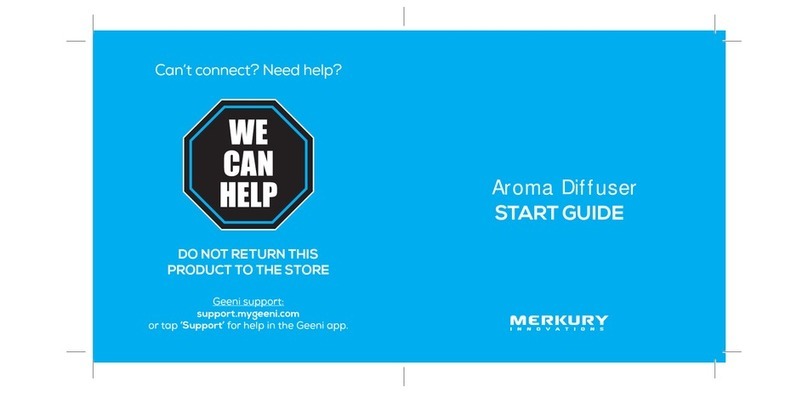
Merkury Innovations
Merkury Innovations Smart Wi-Fi Essential Oil Diffuser Start guide
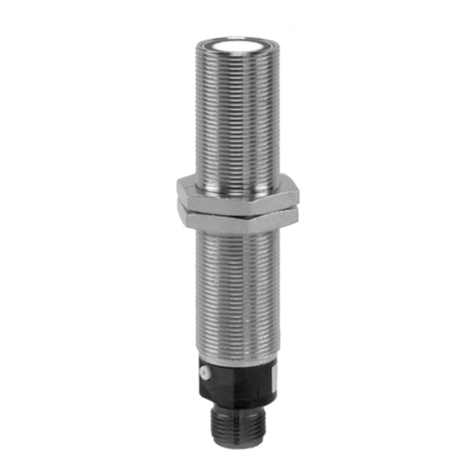
Baumer
Baumer 10161026 manual

Steca
Steca HS200 Datasheet and Operating Instructions

Gin Gliders
Gin Gliders Gingo Airlite XS manual
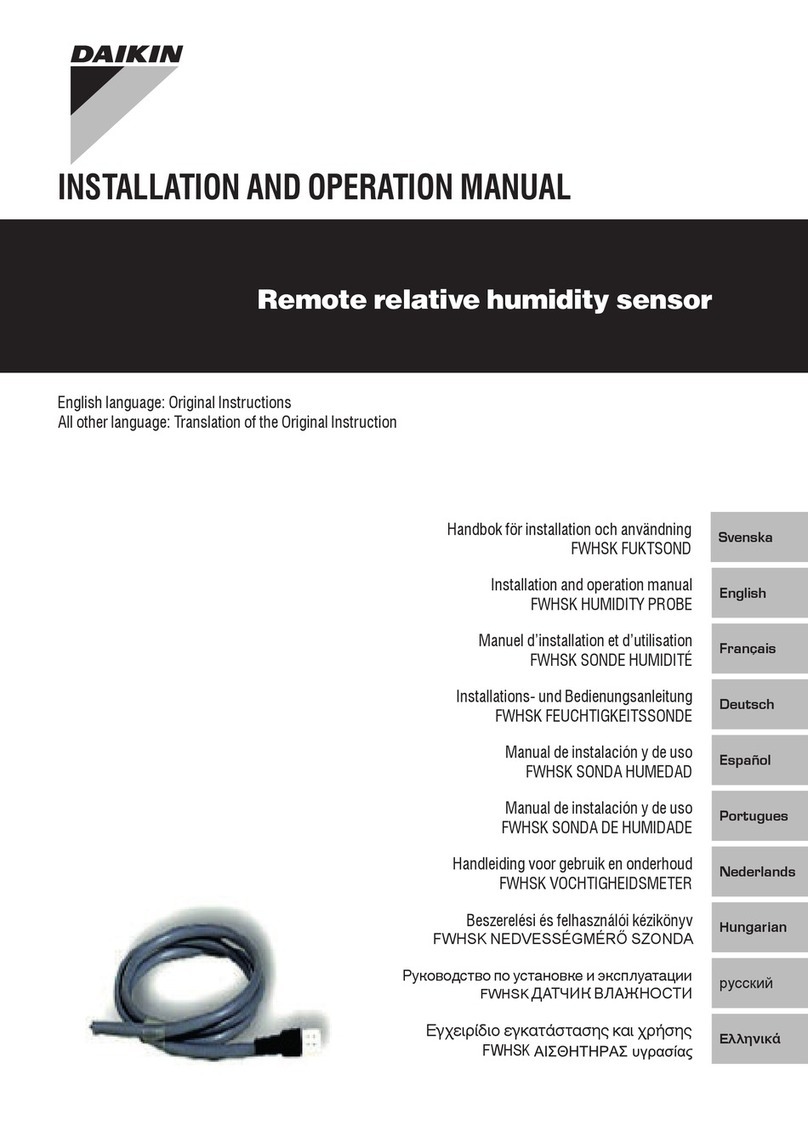
Daikin
Daikin FWHSK Installation and operation manual

Sport-thieme
Sport-thieme 113 5985 Assembly & instruction manual
